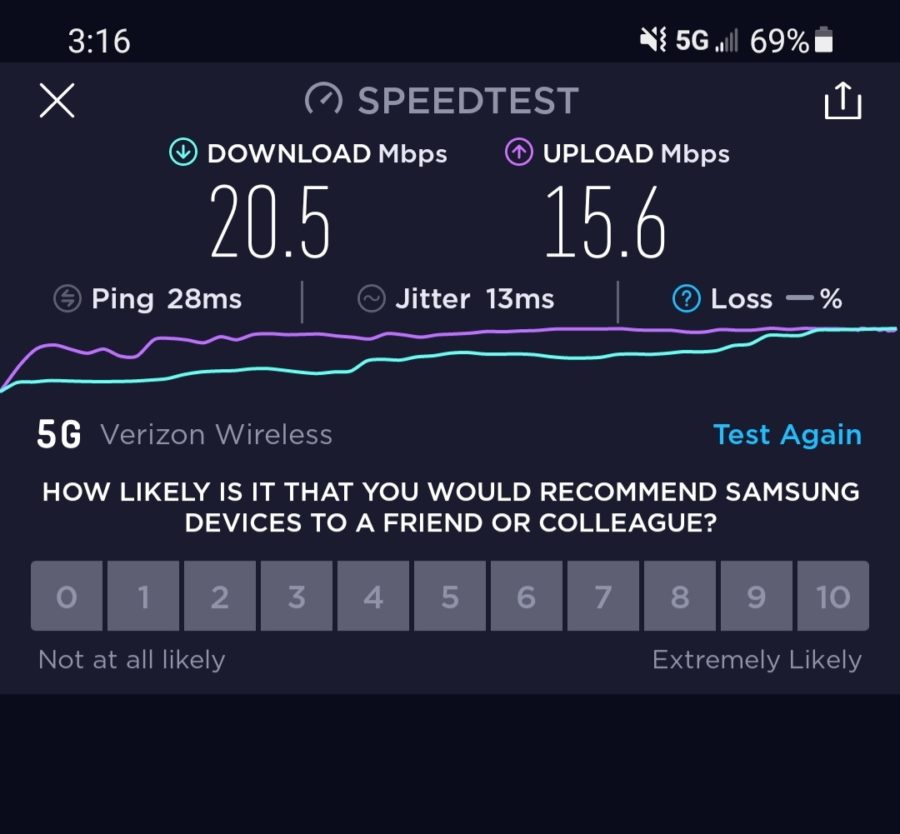Not so fast: ‘Next generation’ 5G not there yet
Verizon “nationwide 5G” speeds measured in the student parking lot at the high school.
Cell phone carriers have touted 5G as the next “big thing.” They peddle big promises, like record speeds and a new age of connectedness.
Manufacturers are also in on the 5G craze. All of the latest smartphones and gadgets are already adopting the standard.
It would appear that as soon as we pick up our new gadget and watch the little network icon in the top corner of our little screen turn from “LTE” to “5G,” we will never have to wait for buffering or call dropping ever again. Alas, this revolution is not yet upon us.
What is 5G? Like all of the communications signals that came before it, 5G consists of specific frequencies on the electromagnetic spectrum. In terms of actual data speeds, a higher frequency means a faster connection.
5G differs from its predecessors in that it has a much larger span of frequencies that count as “5G.” These frequencies are creatively referred to as “low band,” “mid band” and “high band,” with low band being the slowest and high band being the fastest.
The catch comes with coverage. Low band 5G is very comparable to 4G in terms of both speed and coverage. Meanwhile, high band 5G offers speeds many, many times faster than 4G, but the signal is so sensitive that it can be blocked with a sheet of paper.
All wireless communication works by transmitting energy at different frequencies. This is generally referred to as the electromagnetic spectrum, which includes everything from radio waves to visible light to x-rays. When talking about radio waves, higher frequencies generally means faster data speeds.
At the present date, however, the full potential of 5G has not yet been unleashed.
Currently, there are three major wireless service carriers in the United States: AT&T, T-Mobile and Verizon. All three are in similar places in terms of 5G coverage and network speeds, but there are key differences in a few areas.
AT&T and T-Mobile are the most similar in terms of coverage and speeds, currently sporting mainly low band but also limited mid band and high band 5G. Verizon is the odd one out. At the start of when 5G spectrum was up for auction by the FCC, Verizon invested heavily in high band spectrum, often branded as “mmWave” or “Ultra-Wide Band.” These frequencies offer extremely fast speeds, so fast that they are measured in gigabits per second. Unfortunately, these signals require special antennas in phones and are so sensitive that they can be blocked by a sheet of paper. It is no surprise that these speeds are only available in some cities, with the nearest to Beaver County being Cleveland, Ohio.
At the current rate, people should look for revolutionary wireless not now, but in the future.



